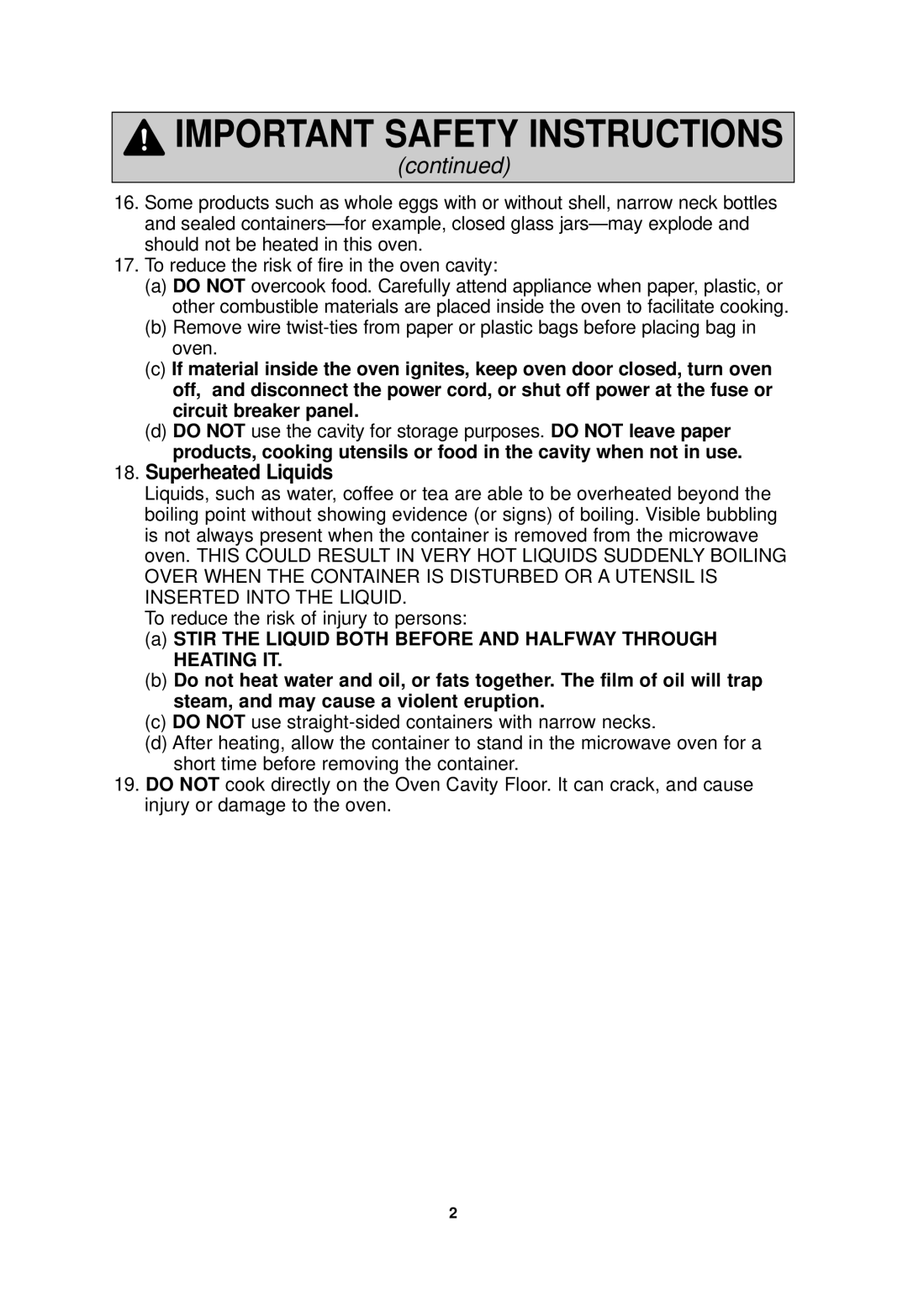
 IMPORTANT SAFETY INSTRUCTIONS
IMPORTANT SAFETY INSTRUCTIONS
(continued)
16.Some products such as whole eggs with or without shell, narrow neck bottles and sealed
17.To reduce the risk of fire in the oven cavity:
(a)DO NOT overcook food. Carefully attend appliance when paper, plastic, or other combustible materials are placed inside the oven to facilitate cooking.
(b)Remove wire
(c)If material inside the oven ignites, keep oven door closed, turn oven off, and disconnect the power cord, or shut off power at the fuse or circuit breaker panel.
(d)DO NOT use the cavity for storage purposes. DO NOT leave paper products, cooking utensils or food in the cavity when not in use.
18.Superheated Liquids
Liquids, such as water, coffee or tea are able to be overheated beyond the boiling point without showing evidence (or signs) of boiling. Visible bubbling is not always present when the container is removed from the microwave oven. THIS COULD RESULT IN VERY HOT LIQUIDS SUDDENLY BOILING OVER WHEN THE CONTAINER IS DISTURBED OR A UTENSIL IS INSERTED INTO THE LIQUID.
To reduce the risk of injury to persons:
(a)STIR THE LIQUID BOTH BEFORE AND HALFWAY THROUGH HEATING IT.
(b)Do not heat water and oil, or fats together. The film of oil will trap steam, and may cause a violent eruption.
(c)DO NOT use
(d)After heating, allow the container to stand in the microwave oven for a short time before removing the container.
19.DO NOT cook directly on the Oven Cavity Floor. It can crack, and cause injury or damage to the oven.
2
